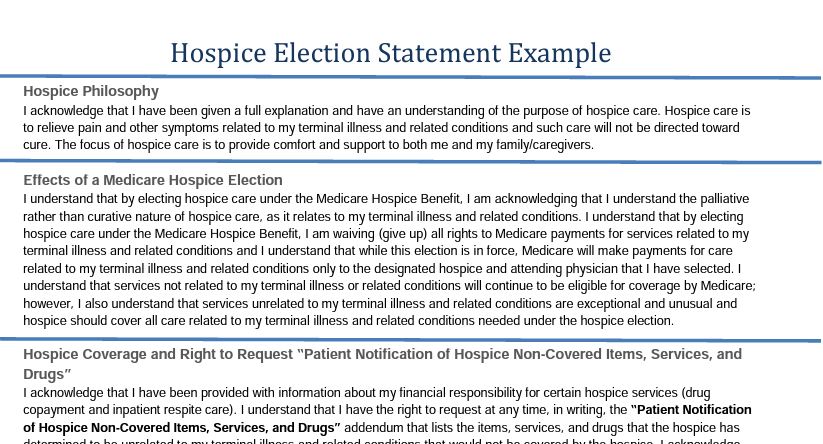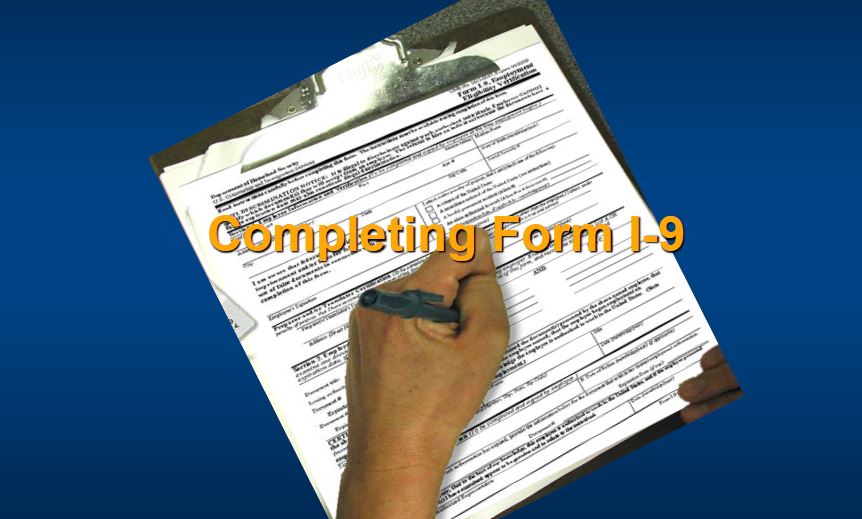
by editor | Oct 20, 2022 | Compliance and Regulatory - Directors, Reports, Rules and Regulations - Nurses
Volunteers are an essential components of hospice. The hospice movement was started by volunteers. There are currently more than 460,000 hospice volunteers nationwide. Volunteers provide administrative support or direct patient care services.
Are hospices required to have volunteers?
Use of volunteers is a Medicare condition of participation. Medicare requires the use of hospice volunteers for any Medicare certified hospice. Volunteers must be used in day to day administrative tasks that support direct patient care activities and/or in direct patient care roles.
For each hospice agency, volunteer hours must equal 5% of total patient care hours for all paid hospice agency employees and contractors. A hospice must maintain records of the number of hours worked by volunteers as well as the types of activities performed and whether these activities were administrative or patient care.
The hospice volunteers must perform their activities under the supervision of a designated hospice employee.
Are there other volunteer-related requirements?
There are additional training and documentation requirements that a hospice agency must meet, relating to hospice volunteers:
- A hospice must provide orientation and training for its hospice volunteers and this training must documented
- Efforts to recruit volunteers on an ongoing basis must be documented
- Cost savings achieved through the use of volunteers must be documented. The documentation must include the volunteer’s position, the time spent by the volunteer, and the estimated dollars that would have been spent by the hospice had this position been filled by a paid hospice employee
What direct patient care activites are performed by a volunteer?
Volunteers travel to the location where the patient currently resides – such as the patient’s home, a nursing home, or an assisted living facility – and work directly with patients, caregivers, and families. These volunteers are considered direct care volunteers. Examples of direct care activities include:
- Performing light household chores
- Cooking meals
- Provide transportation for patients or their families
- Provide companionship to the patient
- Providing respite so that family caregivers can take a break
- Using some special skills that the volunteer has such as giving a manicure, giving a haircut, playing a musical instrument, doing an art project with the patient, and the like
- Travel time to the patient’s home may also be included in volunteer hours, if travel time is also used in the calculation of hospice employee hours
- Time a volunteer
What indirect care activities are performed by a volunteer?
Volunteers can also have an impact without directly interacting with patients. For example, they can prepare items that are delivered to patients, they can advocate for hospice patients in the community, or they can go to volunteer health fairs. Indirect care hospice volunteers can also assist the hospice agency with administrative and general office tasks. Examples of indirect care activities include:
- Assisting with preparing mailings for community outreach
- Assisting with data entry, filing, copying, or other clerical duties
- Answering phone calls,
- Preparing blankets to be delivered to hospice patients
- Helping setup for community events
- Helping with grief support groups
What activities may be included in the calculation of volunteer time?
There activities that may be included in total hospice volunteer hours are varied. For example:
- Time that the volunteer is performing the actual tasks (such as assisting with mailings, data entry, light housekeeping, etc.)
- Telephone calls to hospice patients, their family members, caregivers, or bereaved family members
- Travel time to patient homes, if this travel time is included in the calculation of hours for hospice employees
- Time spent receiving orientation to a specific patient
- Time spent in training to perform specific tasks
What activities may not be included in the calculation of volunteer time?
Recall that volunteers must be used in day to day administrative and or direct care patient roles. So the following are examples of activities that would not be included in the calculation of total volunteer hours:
- Flower arranging
- Working in a thrift shop
- General volunteer training that is not specific to a patient or to an administrative task
- Participation in the agency’s governing board
Where can you find out more?

by editor | Oct 18, 2022 | Billing, Billing - General, Compliance and Regulatory - Directors, Medical Records, Rules and Regulations - Nurses
What is a hospice election statement?
A hospice election statement is a condition of payment under Medicare. For a patient to be eligible to receive hospice services under the Medicare benefit, the patient or the patient’s authorized representative must elect hospice care by signing a hospice election statement. While Medicare provides a model of this form, each hospice agency is free to design their own hospice election form. However, there are some required elements, as specified by Medicare. To find out more details about the hospice election statement, read more at our blog post here: What is the Hospice Election Statement requirement?
Why is the hospice election statement important?
An invalid hospice election statement can impact payment for the entire patient hospice stay. There has been a recent rise in denials related to the election form. As such, it is important for hospice agencies to ensure that all required elements are present on the form and that the forms are completed accurately.
What are are tips for avoiding common hospice election form denials?
- Tip 1: Use the model election form provided by CMS or stick to something very close to it. This will ensure that no critical elements are missed. CMS has provided a model hospice election form. Hospice agencies are not required to use this model form; they may design their own election form.
- Tip 2: Focus on the purpose of the document and stick with the required elements, Over the years, hospices have had a tendency to add to their election forms so that it has been moving away from its original legal intent. While it is good to provide patients with additional information, the election form may not be the appropriate place to provide this information. By adding information to the election statement, there is a risk that upon audit contractors may find fault with aspects of the document that are not part of Medicare’s required elements of the election statement. In other situations, contractors missed the election statement since it was buried in a such a long document.
- Tip 3: build in redundancy in the elements of the elements of the hospice election statement. Use the admission material to build in redundancy of the required elements of the hospice election statement. That is, the required elements can be included in the election statement but some of the election statements which, for example, are acknowledgement statements, can be included in other admission material that is provided to the patient on admission. This could be helpful to defend potential claim denials or invalid denials in case of audit.
- Tip 4: Reduce the possibility of errors in completing the forms, by stressing the importance of the forms, creating standardized processes, and leveraging technology. Reduce human error by ensuring that the individuals responsible for completing the documents understand their importance. Human error is the biggest problem with properly completing the hospice election statement form. Create processes to double check the forms – in real time. Leverage technology, where possible, to eliminate the possibility of errors or to detect errors.
Where can you find more information?

by editor | Oct 18, 2022 | Billing, Billing - General, Compliance and Regulatory - Directors, Hospice 101 - Aides, Hospice 101 - Chaplain, Hospice 101 - Office Team, Hospice 101 - Social Workers, Rules and Regulations - Chaplains, Rules and Regulations - Nurses, Rules and Regulations - Social Workers
To receive hospice services under the Medicare benefit, a patient or his authorized representative must elect hospice care.
If the patient or authorized representative elects to receive hospice care, the patient must file an election statement with a specific hospice agency. The election statement serves to indicate that the patient is choosing hospice care.
The election statement and the election statement addendum are conditions for payment.
What is the structure of a hospice election form?
Every hospice agency can design and create their own hospice election statement form although Medicare has published a model form that can be used by hospice agencies Model Hospice Election Statement. The election statement must include all of the following elements:
- Name of hospice agency that will be providing the services
- Acknowledge that nature of hospice services have been explained to the patient including, in particular, the palliative rather than curative nature of care
- Acknowledge patient understands that by electing hospice care, some Medicare services are waived
- For hospice elections beginning on or after October 1, 2020, a statement that although it would be rare, there could be some necessary items, drugs, or services that may not be covered by hospice because these items are deemed to be unrelated to the terminal illness or related conditions
- The effective date of the election. This may be the first day of hospice care of a later day. But it cannot be a date that precedes the date that the election statement was signed by the patient or their authorized representative.
- The individual who is serving as the patient’s attending physician, if any.
- Acknowledgement that the identified attending physician was the choice of the patient or authorized representative
- Signature of patient or authorized representative
There are some additional requirements for the election statements for elections beginning dated October 1, 2020 or later. These election statements must also include :
- Information on patient cost sharing for hospice services
- Notification of the patient or authorized representative right to receive an addendum to the election statement. The addendum is only required to be furnished to beneficiaries, their authorized representatives, non-hospice providers, or Medicare contractors who request this information. This addendum includes a list and rationale for the items, drugs, or services that are not covered by hospice services because the hospice has deemed these to be unrelated to the terminal illness and related conditions.
- Information on the Beneficiary and Family Centered Care Quality Improvement Organization (Beneficiary and Family Centered Care (BFCC) ), including that immediate advocacy is available through this organization if the patient disagrees with the hospice’s determination regarding non-covered services
Right to Request Patient Notification of Non-Covered Items, Services, And Drugs
At any time, a patient may request, in writing, the Patient Notification of Hospice Non-Covered Items, Services, and Drugs. addendum to the election statement.
The hospice agency must provide the notification within five days, if this request is made on the start of care date.
If the request is made during the course of hospice care, the hospice agency must provide the requested notification within 72 hours.
If the patient (or authorized representative) requests the addendum at the start of care but dies with five days, the hospice is deemed to have met its requirement and is not required to provide the addendum.
When would a hospice update the addendum?
The addendum lists the patient’s diagnoses and conditions that are present upon hospice admission and the items, services, and drugs that are not covered by the hospice because they are deemed to be unrelated to the terminal illness and related conditions.
During the course of hospice care, the addendum may require update, for example, if the patient’s plan of care is updated.
Changes to the addendum will need to be signed by the patient or his authorized representative and stored in the patient’s medical record with the hospice agency.
Where can you find more information on the election statement

by editor | Oct 12, 2022 | Employee Onboarding, Human Resources, Payroll
A Form I-9, also known as an Employment Eligibility Verification form, is a form required by the U.S. government for each employee. The information on this form and its supporting documentation:
- Verifies the employee’s identity
- Verifies the employee’s eligibility to work in the U.S.
When must the Form I-9 be completed?
The Form I-9 is completed as part of the new hire paperwork provided by an employer during the hiring process.
Each new employee must complete and sign the Form I-9 employee section by the end of their first day of employment. The employer must complete and sign the employer sections by the end of the new employee’s third day of employment.
The employer must verify the employee’s eligibility and identification documents and record the document information on the Form I-9. Employees must present original documents, not photocopies, for verification.
Who is required to complete an I-9?
An employer must fill out and retain an I-9 form for all employees, whether or not they are U.S. citizens.
Are there instances where an I-9 form is not required?
A Form I-9 is not required for an independent contractor. A Form I-9 is also not required for employees hired on or before November 6, 1986.
What should you do if you do not receive an I-9 form?
A Form I-9 is required for continued employment. An employer that does not maintain these forms may face fines or criminal penalties.
If an employee fails to provide his employer with the necessary documentation or receipt for a replacement document within three business days of start of employment, the employee can be terminated. If an employee provides a receipt for replacement of missing documents, he has 90 days to present the replacement documents.
Must an employer retain the I-9 form?
An employer must store the Form I-9 and supporting documents together. The employer must ensure that only authorized personnel have access to the stored forms. The forms must be available within 3 days of an official request for inspection.
The forms must be retained for either three years after an employee’s start date or one year after their termination, whichever is later.
Where can you find more information?
Additional resources are available here:

by editor | Oct 11, 2022 | Human Resources
Managers often avoid “uncomfortable” feedback discussions
Managers often shy away from providing tough feedback to their employees. Or, if they do sit down for these difficult discussions with their employees, the discussions dissolve into arguments and finger pointing – by the manager, the employee, or both.
The key is providing effective feedback
But avoiding providing feedback to the employee is not the solution. Typically, when a manager observes an undesirable behavior, this behavior only escalates and the situation worsens – often to the point that the relationship cannot be salvaged. Rather than trying to ignore undesirable behavior, the key is providing effective feedback.,
Why is effective feedback important?
Effective feedback can be the difference between sparking growth and development in an employee, resulting in an employee who contributes positively to the team versus and employee who feels diminished and reduces their contribution to the organization.
What are key aspects of effective feedback and how can you maximize likelihood of employee success?
Effective feedback will encourage the employee to self reflect and lead to growth and development, rather than encouraging denial and self-preservation.
Provide constructive criticism, that helps the employee understand where they need to improve and why the improvement is important. Identify the problem and a plan to help the employee improve. The employee can be invited to help find solutions, so that they are a partner in the solution.
Once you deliver feedback, be sure to follow up. It’s not sufficient to simply tell the employee what they need to improve upon. You need to give them a plan to follow, targets and goals to achieve, and then check in to help them stay on track. Offering ongoing feedback is helpful – with more feedback and check-ins earlier on in the process.
It is important that a manager is honest with employees. If an employee is underperforming, a manager has a responsibility to let the employee know and to give them a framework and tools to improve their performance.
Read more about providing effective feedback
Some additional resources:
How to Give Tough Feedback That Helps People Grow, Harvard Business Review, August 2015
How to Give Negative Feedback to Employees, Lian Parsons, June 2022
7 Successful Tips To Help Leaders Give Negative Feedback Effectively, Forbes, February 2020





